A new species of lambeosaurine hadrosaurid has been named and described this week from fossil material excavated from a site close to the town of Presa de San Antonio in northern Mexico. The dinosaur has been named (Tlatolophus galorum) and it represents the most complete lambeosaurine known to date from Mexico. A phylogenetic assessment of the extensive fossil material suggests that this dinosaur was more closely related to Parasaurolophus which is known from roughly contemporaneous strata further north than it was to the lambeosaur Velafrons coahuilensis, the first duck-billed dinosaur from Mexico to be scientifically described.
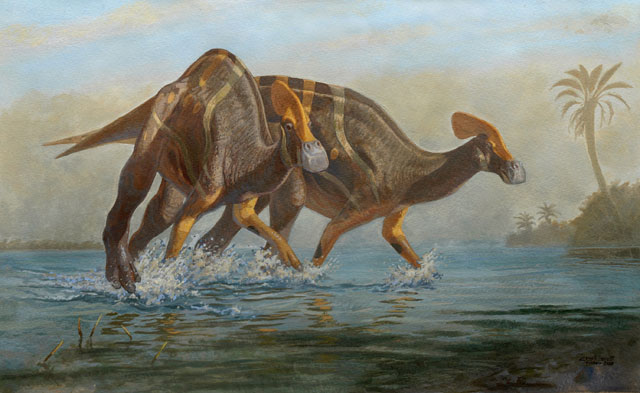
The Tail of a Hadrosaur’s Tail
In 2013, Everything Dinosaur reported on the discovery of an articulated dinosaur tail in upper Campanian deposits of the Cerro del Pueblo Formation that had been putatively assigned to a hadrosaur. Field team members from the National Institute of Anthropology and History (INAH), an institution of the Ministry of Culture and the National Autonomous University of Mexico (UNAM) were despatched to excavate the specimen. The fossils had been spotted weathering on the surface in 2005, but serious field work did not commence until 2013.
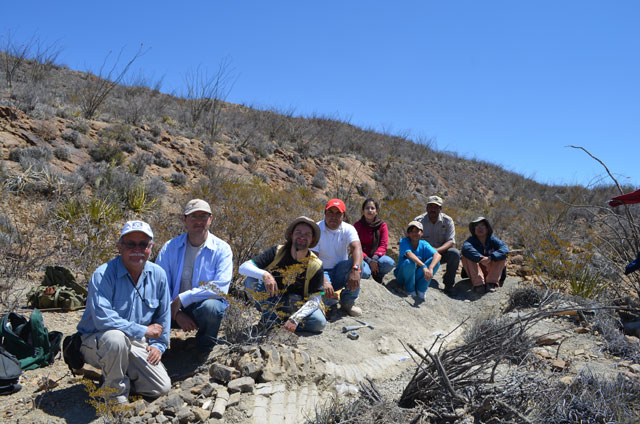
Exposing More of the Specimen
The first aim was to collect and stabilise the material exposed to the elements on the surface. Once this had been taken care of further excavation work revealed that almost the entire tail was present (just the most distal elements were missing). As more of the specimen was revealed the field team slowly began to realise that the anterior portion of the dinosaur might be present too.
Co-author of the scientific paper, published this week in Cretaceous Research Ramírez Velasco (UNAM) commented:
“Although we had given up hope of finding the upper part of the specimen, once we recovered the tail, we continued excavating underneath where it was located. The surprise was that we began to find bones such as the femur, the scapula and other elements”.
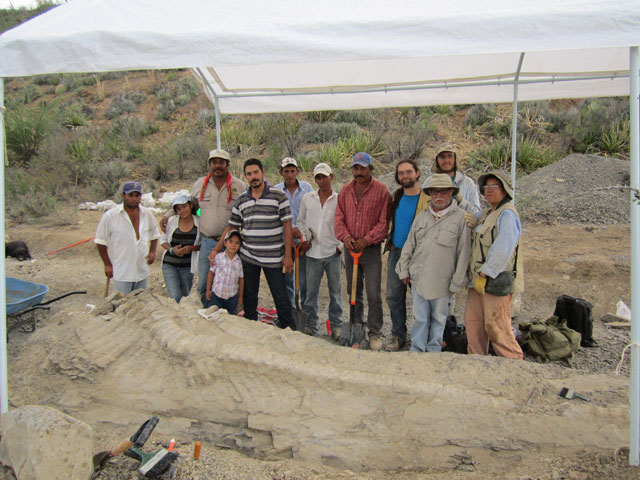
An Elongated Drop-shaped Bone
As more of the front half of the dinosaur was exposed, a drop-shaped bone was found. At first, this was interpreted as part of the pelvis, but researcher José López Espinoza suggested that this was a bone from the skull. It was only after careful cleaning, preparation and analysis in the laboratory that the scientists realised that they had 34 bone fragments that formed a considerable portion of the skull and jaws.
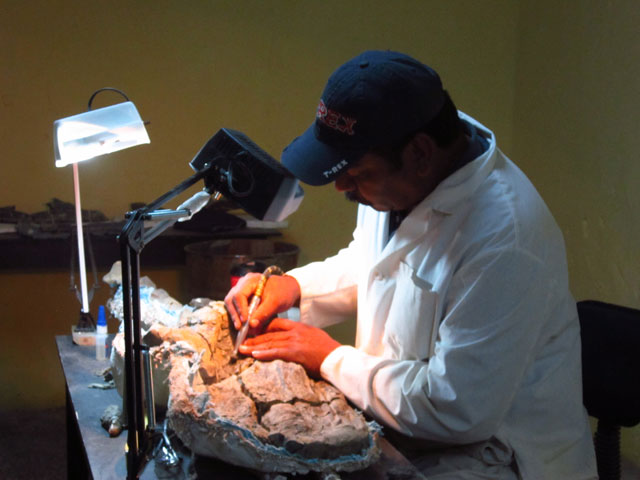
Identifying the Crest
The team were excited to discovery that about 80% of the skull had been recovered including the premaxillae that formed the top part of this duck-billed dinosaur’s head crest. The crest measures an impressive 1.32 metres in length, as well as being able to determine the shape of the crest the scientists could also reconstruct the neurocranium, that part of the skull that housed the brain.
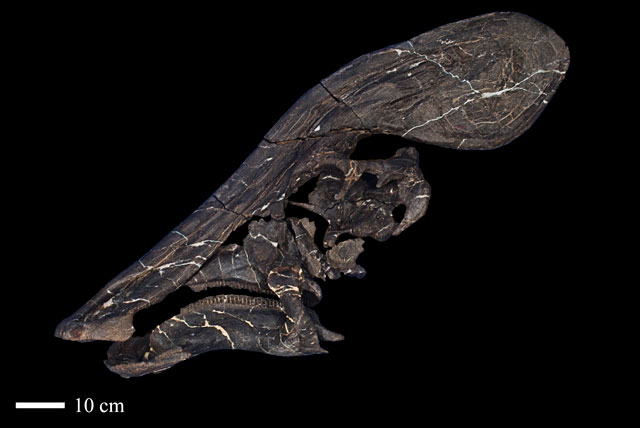
Comparison with Velafrons coahuilensis
With so much of the skull material preserved, the research team was able to compare these fossils to other lambeosaurines, including the contemporaneous Velafrons coahuilensis which is also known from the Cerro del Pueblo Formation. Taxonomic and phylogenetic assessments consigned Tlatolophus to the Parasaurolophini tribe, suggesting that it was more closely related to hadrosaurs found further north than it was to Velafrons.
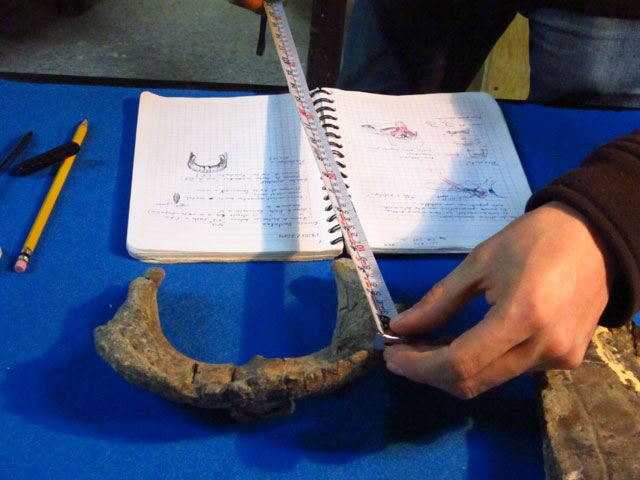
Tlatolophus – What’s in a Name?
The etymology of this dinosaur’s name reflects the shape of the distinctive head crest. The genus name derives from the local Náhuatl dialect for the word “tlahtolli” which translates as “word” as the crest shape resembles a symbol used by native people to demonstrate communication. The Latin “lophus” means “crest” and therefore the genus name translates as “word crest”. The species or trivial name honours the philanthropist Jesús Garza Arocha and recognises the assistance of the López family, who helped the palaeontologists by providing accommodation, food and other facilities during the field seasons.
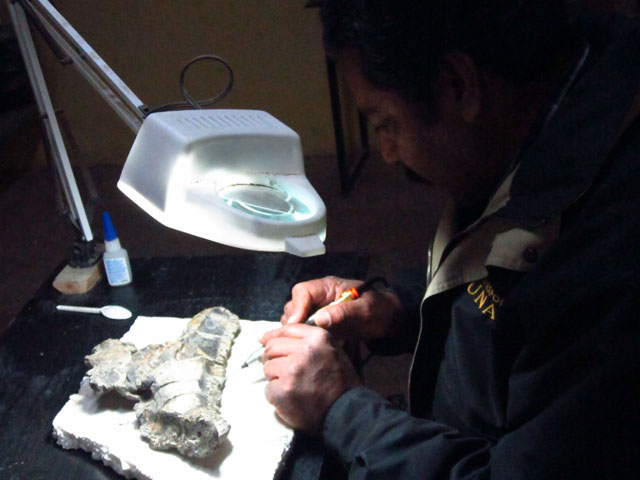
Tail Bones on Display
The articulated tail of Tlatolophus galorum is on display in the municipal capital of General Cepeda, where, with the support of the city council, a special area was set aside to highlight the dinosaur fossils that have been found in this region of northern Mexico.
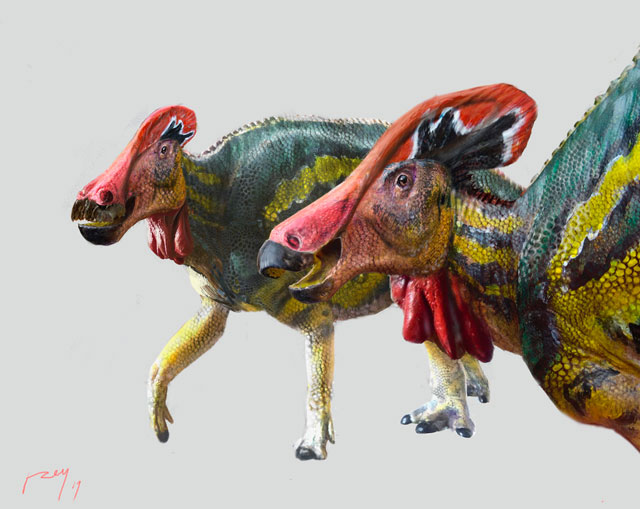
Everything Dinosaur acknowledges the assistance of a media release and scientific notes provided by the INAH in the compilation of this article.
To read Everything Dinosaur’s 2013 blog post about the excavation work to uncover and remove the articulated tail of the specimen: The Tail of a Hadrosaur’s Tail.
To read about the discovery of Mexico’s first duck-billed dinosaur: Viva Mexico – New Duck Billed Dinosaur Discovered “South of the Border”
The scientific paper: “Tlatolophus galorum, gen. et sp. nov., a parasaurolophini dinosaur from the upper Campanian of the Cerro del Pueblo Formation, Coahuila, northern Mexico” by Ángel A. Ramírez-Velasco, Felisa J. Aguilar, René Hernández-Rivera, José Luis Gudiño Maussán, Marisol Lara Rodríguez and Jesús Alvarado-Ortega published in Cretaceous Research.
Haolonggood have introduced a model of Tlatolophus galorum. To view the Haolonggood range: Haolonggood Prehistoric Animal Models.






Leave A Comment